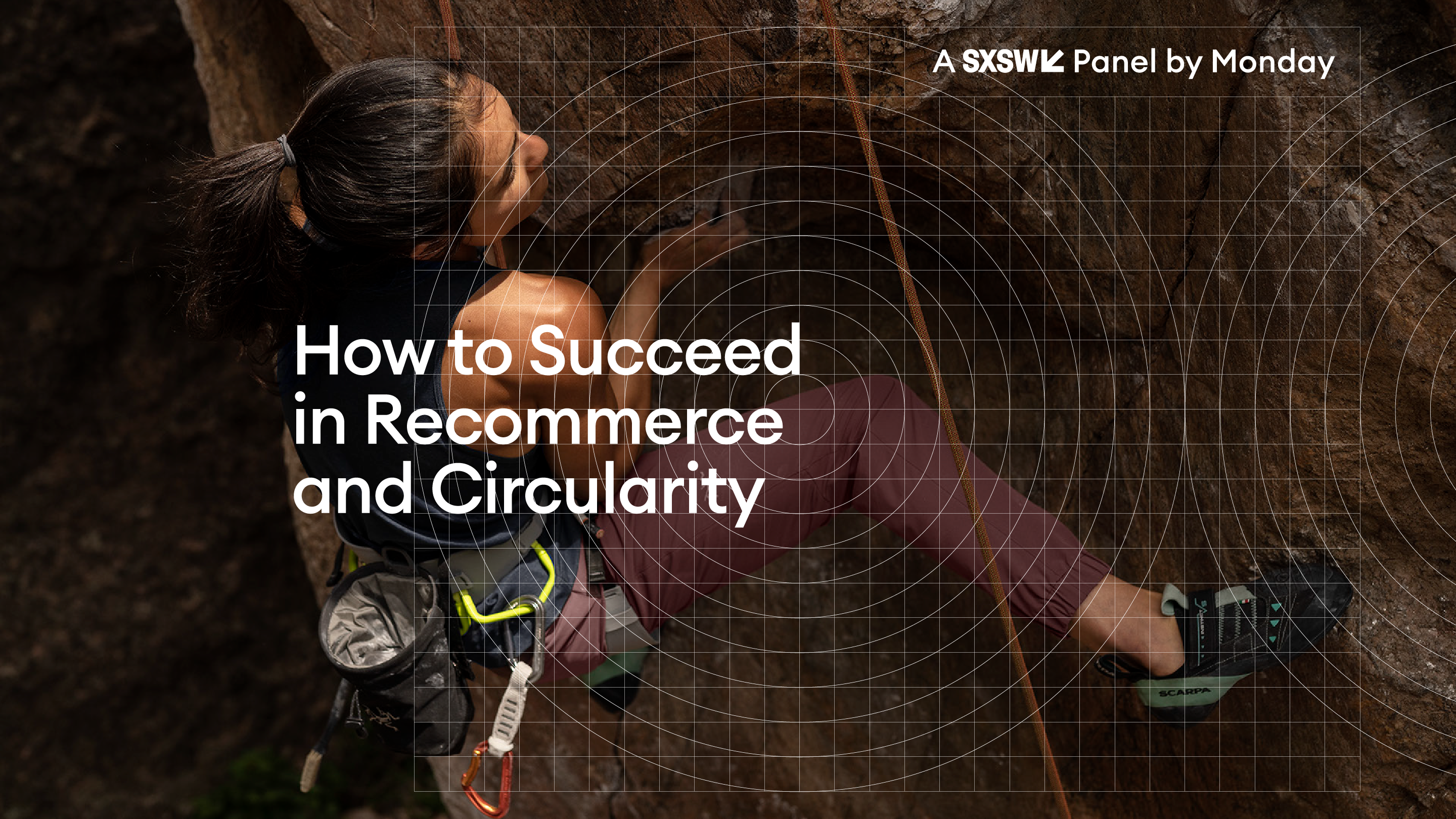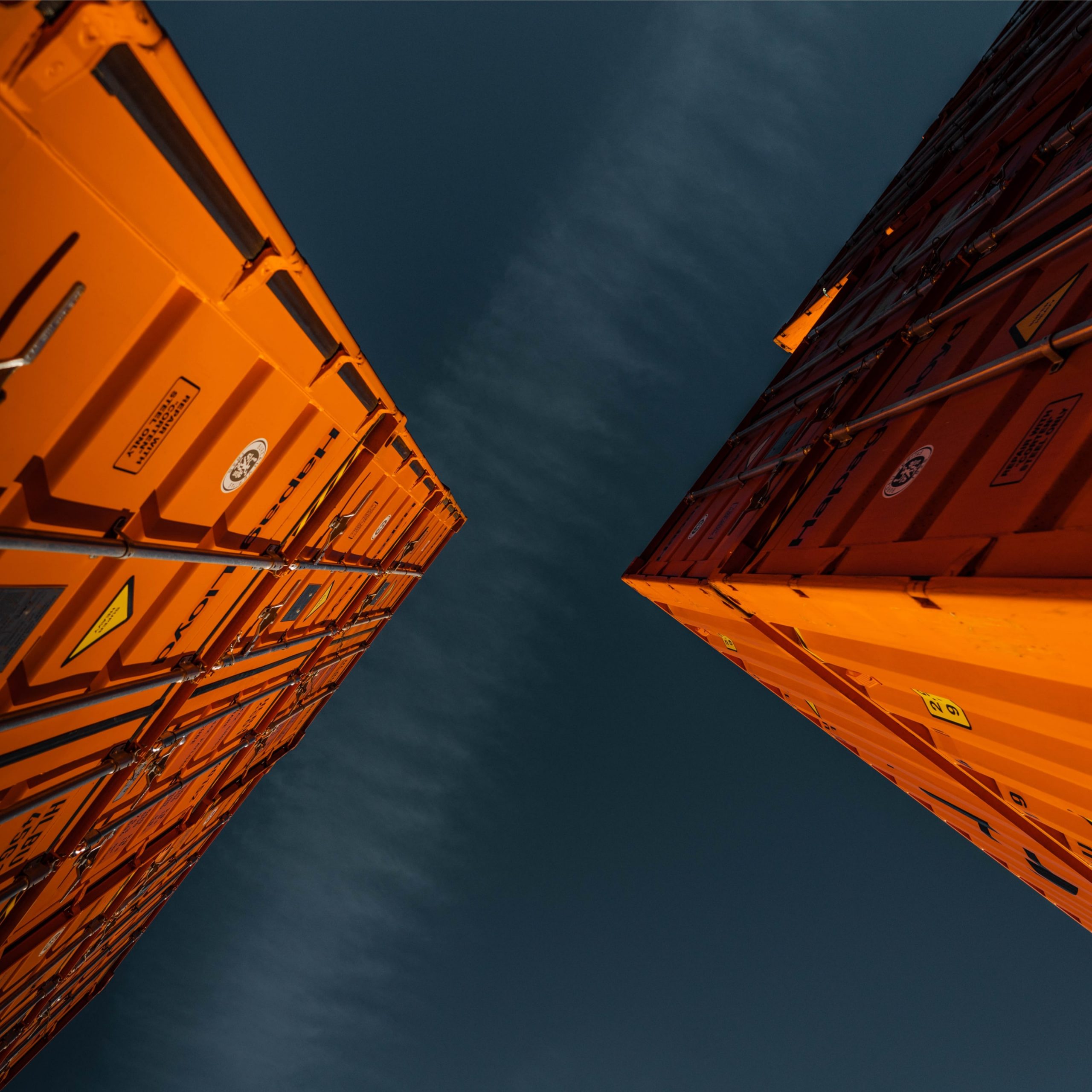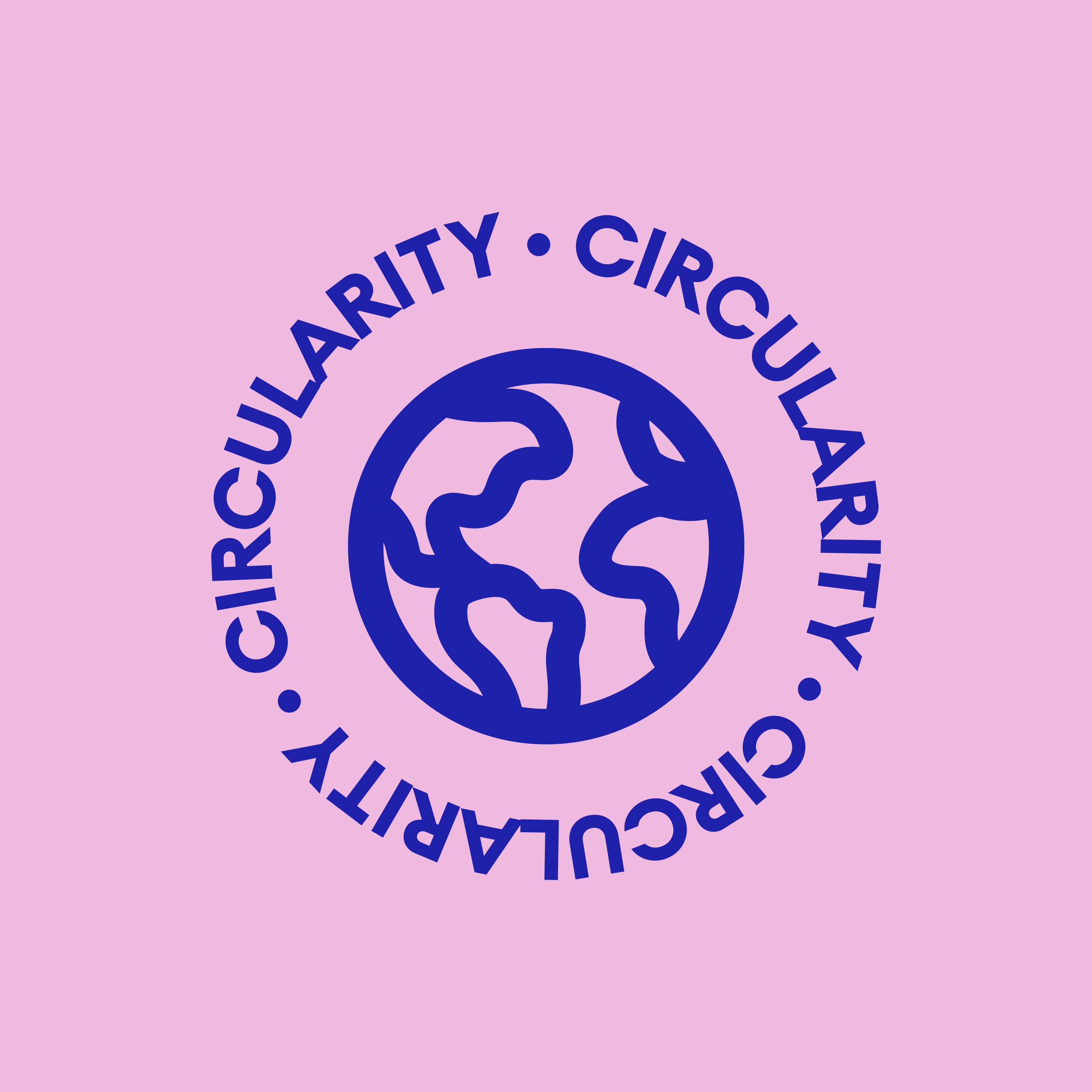Not that long ago, it was innovative for apparel brands to tout their lines of fleece made out of water bottles. But with record high temperatures, annual wildfires and the more recent atmospheric river that caused devastating flooding and landslides to the Pacific Northwest—it’s clear that the planet isn’t happy. Keeping bottles out of the dump isn’t enough—we need to think a lot bigger.
Preserving the planet is at the heart of what we do here at Monday. We love nature. We also love the gear that gets us into nature and allows us to enjoy it in comfort, which can feel like a paradox at times. For us, the answer is product circularity.
This spring, Amanda Lee Smith, Monday’s CEO, took to the SXSW stage to moderate a panel of circularity visionaries—Aileen Ottenweller of Patagonia, Annie Agle of Cotopaxi and Dominique Showers of Arc’teryx.
For a glimpse into the conversation—and to propel your own sustainability efforts—here are the highlights from the brightest in the business.
Amanda Lee Smith: How do you define circularity in your business and what are some of the ways circularity shows?
Aileen Ottenweller: Patagonia started as a climbing and hard goods company. When our early customers and the people working for us were out climbing, they would notice a lot of rock degradation from their climbing equipment. Climbing shouldn’t have to destroy the place where we like to play, so we turned that into an opportunity to make something better. That same thinking translated when we went into apparel.
Repairability is the genesis of who we are as a company—realizing that people want to keep their gear forever or pass it along. So circularity at Patagonia stemmed from our customer community and lead to Worn Wear, our recommerce platform. We always get stories from our customers on how they used their gear and the adventures it went on—so our customer base is living the values we want to represent. We think about Worn Wear and circularity as our core commitments to the future—it’s how we’re going to use business to save our home planet.
Dominique Showers: At Arc’teryx, our commitment to circularity was born inside of the work that we’re doing in the business. We also started as a climbing brand and then 10 years later evolved into creating technical apparel—we actually created the first waterproof zipper in partnership with YKK which was an important technology that a lot of brands use today.
Our designers are like industrial engineers in the way they craft. They figure out how a piece of apparel is going to fall apart to create a better solution for the future. We’ve developed a preferred material and fiber roadmap and also have circular initiatives that are upstream—so we’re looking at designing for reparability and disassembly.
Our ReBird™ initiative is our commitment to care and repair, and offers a huge amount of education. For example, there’s not a lot of knowledge about GORE-TEX. When you wear and sweat in a GORE-TEX jacket it actually causes degradation of the product. You need to put it in the washer and dryer to preserve the technology. Sharing this knowledge is essential to keep gear in the field longer. Our recommerce program, Used Gear, is a convenient way for customers to trade in gear and get something new or used. We’re also testing a lot with upcycling—working with Excess Raw Materials and Used Gear to figure out what it can be turned into once it can’t be repaired anymore.
Annie Agle: Founded six years ago Cotopaxi is the new kid on the block. We were the first benefit organization to ever receive top 500 venture capital funding and were founded as a sustainable means of addressing extreme economic inequality. We’ve always known that climate change is the leading cause of extreme poverty, and see circularity as a very holistic tactic that is incredibly important for understanding and driving our mission.
Circularity allows us to take responsibility for our negative impacts. It also allows us to maximize our contributions to society by making products that won’t contribute to harm, and in a way that extends their life. For example, we use fabric scraps from other outdoor brands to build a lot of our products and to eliminate waste. We also work with repair and recommerce to extend product life and provide functional outdoor gear for people of lower incomes.
Amanda Lee Smith: Okay, so why does this matter? Why are you doing this and what are you trying to achieve?
Aileen Ottenweller: I think to start it’s good to recognize that humans have an addiction problem. Consumerism and extractive capitalism are the root of the problem—climate change is really a symptom. We’re past the point of even just having an addiction to buying—we’re now finding excess places to store stuff that you’re not really using.
For Patagonia, we actually changed our mission statement a few years ago to: “We’re in business to save our home planet.” It was really a call to arms for us internally and to create a sense of urgency with the rest of the apparel industry. We need to start using every single lever and tool that we have to address this issue because addiction is prevalent.
Dominique Showers: This quote from professor Robert Hopkins from NYU is essential to think about: “When we look at what the climate scientists are telling us we know that by 2030 we either have to profoundly reimagine everything or the human experiment is over—or it’s so bleak that it might as well be. We have this 10 year period that if we get it right, it could feel like having lived through a revolution of the imagination.” This was written two years ago, so we have eight years to get it right. And at Arc’teryx we call ourselves problem solvers—it’s in our DNA and we are committed.
Amanda Lee Smith: As a marketer, of course the first thing I think about is, how do you talk about these initiatives? Do resale and repair live separately from your mainline brands or do you position them together?
Annie Agle: I think the heart of circularity and its success comes from collaboration. It’s from moving away from consumers and toward the stakeholders. The most vulnerable people in our value chain are the stakeholders who touch and make our product—which are our suppliers and workers. That’s where the solutions are and where you can capture value.
So the first thing in terms of our tactics is really changing how we work with suppliers. Three years ago we started having very in-depth conversations with our suppliers about what we could be doing better, and they had a lot of solutions for us. That’s when we could really scale with a program that uses remnant waste—it comes from our suppliers and procurement.
The second thing is repair and resell, which comes down to marketing. We like to say that every piece of marketing needs to educate someone on something. There needs to be a gift in the piece of marketing that leaves a customer better off than when they found you—so they’re informed on their decisions and they can advocate for a more moral and sustainable future. A future that allows us to meet the needs of our generation while also allowing the needs of future generations to be met.
Dominique Showers: Looking back about five to six years ago, we started with a massive pile of warranty trade-ins, but we didn’t have the time or the repair operators to manage it. So we went on a journey and looked into ways to repair it and also started working with Trove. They supported us from an enablement perspective so that we could offer resale for our Used Gear. On top of that, we’ve been able to offer Used Gear in some of our retail stores.
However, it doesn’t come without its challenges. Our products are so technical that you need deep partnerships in order to get great performance out of used products. It’s a ton of time but it’s worth the investment.
Aileen Ottenweller: What’s been working well for us is an initial belief and trust that our customers are doing the right thing. They want to pass gear along and swap gear—so the path to resale came from seeing how this was naturally occurring among our customers. And then our thought was to amplify this behaviour beyond our core customer community to bring more people in. So our circularity values around repair, repurpose and recycle are built into our mainline business—at one point we even had the largest repair facility for apparel in North America.
Amanda Lee Smith: We all know this isn’t easy work. What are the main barriers or challenges along the circularity journey?
Dominique Showers: There’s an opportunity to really shift the customer mindset away from consuming and towards a custodial concept—we are custodians of the product that we wear and of the things that we use. It can be challenging to compete with five decades of consumerism, but it’s an important initiative.
Our systems and operations to support repairing and reselling of gear are also a challenge. It’s a lot of work to look through product and figure out what’s wrong with it, to put it through repairs only to find out it failed, to go back to the beginning to make sure it succeeds. It’s an ongoing process and messy challenge that we face right now.
Annie Agle: We have similar problems, and we also find it’s a challenge to convince people that clothes sitting in the back of a closet are a good use of time or money. That putting those clothes back into circulation is a really powerful tool that everybody has access to. Just being able to get that message out there and get clothes back in circulation in an approachable way is where we end up spending a lot of time.
Amanda Lee Smith: What I’m hearing is that success in circularity is really about shaping the customer mindset and behaviour. How have you been approaching this in your businesses to make it actionable?
Aileen Ottenweller: I believe that brands have the power to change societies. There’s a spectrum of awareness and capability for people to understand their relationship to consumption. The time and the cost of what it means to buy more sustainably is a real barrier for people. So looking at the barriers and inflection points that people have in their lives gives you the map for how to talk to customers more truthfully and authentically. There’s a lot of data and cold hard facts about consumption that are really scary and heavy, but if you can weave it into a human story it’ll hit people in a much better way. So we really focus on building our connection through human storytelling.
Annie Agle: We understand that as a company there’s a huge benefit to being a first mover in an environment. We don’t just want to make it actionable for customers, we really want other entrepreneurs and other companies to understand that the table stakes have changed and they can do this too—that no one is being left out of the equation. Operating off the assumption that humans want to do the right thing and providing that choice—that’s our product.
Dominique Showers: For us, everyone is part of the evolution of the future. We’re focused on continuously educating and communicating why we’re passionate about preserving the earth that we’re on through actionable storytelling. We can’t change this only from within, we need everyone to be a part of it. Essentially that’ll be the big win if we can get everyone singing off the same song sheet and really dedicate to the work over the next eight years—because we don’t have the time to keep talking about it.
Amanda Lee Smith: As an industry, where are we at on the circularity journey?
Annie Agle: It’s hard to know. You’re supposed to have some sort of measurement or some box-ticking exercise that allows you to quantify where you are on the roadmap. And to be honest, I don’t think that exists—but collaboration is really key. We’re all technically competitors, yet we’re peers and there’s no room for competition anymore. I think that’s a massive change in the journey and it’s a fundamental shift that’s happening.
Amanda Lee Smith: We’ve got a long road ahead of us, so what’s next? Where do we go from here?
Aileen Ottenweller: We’ve touched on this a few times, but it’s all about cooperation over competition. It’s really not competition that allows multiple species and ecosystems to thrive—they are actually all in cooperation. So again, following natural ecosystems, following how humans can and do show up for each other is what we need to pull on. Dr. Ayana Elizabeth Johnson, our newest board member, also talks a lot about how everybody has a superpower—a unique skill set that you use day to day. And it’s by pulling on these strengths and using our own superpowers that we’ll be able to continue living as a species.







